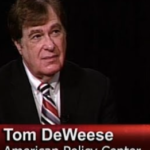R-CALF United Stockgrowers of America
“Fighting for the U.S. ! Cattle Producer”
For Immediate Release Contact: R-CALF USA CEO Bill Bullard
December 15, 2011 Phone: 406-252-2516; r-calfusa@r-calfusa.com
8 Days of Opposition to USDA’s Proposed Mandatory Animal Identification Rule: Part II of VIII-Part Series
Billings, Mont. – As promised, R-CALF USA has launched an 8-day series of news releases to explain in detail many of the reasons our members vehemently oppose the U.S. Department of Agriculture (USDA) Animal and Plant Health Inspection Service’s (APHIS’) proposed mandatory animal identification rule titled, Traceability for Livestock Moving Interstate (proposed rule).
With this effort, R-CALF USA hopes to bring to light many of the dangerous aspects associated with the proposed rule that R-CALF USA described in its voluminous comments submitted to APHIS on Dec. 9, 2011. Click here to view the entire 41-page comment submitted by R-CALF USA, which includes all of the group’s citations to specific references that are removed from this news release to save space.
Part II: By Deploying the Underhanded Tactic of “Bait-and-Switch,” APHIS Deceptively Scared the Livestock Industry, Congress, and the Public Into Falsely Believing that a Mandatory Animal Identification System was Absolutely Critical to Protect the U.S. from Foot-and-Mouth Disease
- APHIS’ Flip-Flop Regarding Its Principal Justification for a Mandatory Animal Identification System Demonstrates that APHIS has an Ulterior Motive for the Proposed Rule that Is Unrelated to the Prevention or Control of Animal Diseases
Remarkably, while APHIS touted the risk of FMD introduction and spread as the principal justification – indeed its “poster-child disease” – for a national animal identification system (NAIS) in the years, months and days leading up to its publication of the proposed rule, FMD is no longer included among the diseases APHIS identifies as justification for its proposed rule. In fact the voluminous, 28-page proposed rule does not even mention FMD, let alone reference it as a disease APHIS would expect to prevent or control should it finalize its proposed rule. Any mention of FMD is now relegated to a small, hypothetical and ambiguous section in APHIS’ supporting documents, in which APHIS provides the disclaimer that its hypothetical FMD discussion “does not specifically model conditions that may exist under the proposed rule;” and in whi! ch APHIS provides no explanation regarding how its proposed rule would, in any way, protect against a potential outbreak or spread of FMD.
It is abundantly clear that while APHIS has long assigned substantial weight to the potential to mitigate FMD introduction and spread in the United States in its historical and ongoing effort to impose a national animal identification system on the U.S. cattle industry, it has now completely abandoned its flagship disease.
In its 2008 risk evaluation of South Korea, APHIS described in detail South Korea’s evolving national animal identification system to highlight the system as a measure to effectively mitigate FMD spread following a FMD outbreak (EXHIBIT 6, pp. 24, 25). Similarly, in recent congressional testimony, APHIS testified that Japan had adopted a national animal identification system and that the need for such a unified national animal identification system had assumed greater urgency in the U.S. due to FMD (EXHIBIT 7). APHIS further claimed that a national animal identification system would be critical in mitigating the risks posed by potential FMD outbreaks, and vehemently argued that the costs of a national animal identification system must be compared with the estimated billions of dollars in losses th! e U.S. would be expected to suffer from a FMD outbreak (EXHIBIT 7). Recently, in APHIS’ risk analysis section of its risk evaluation for the agency’s proposed rule to regionalize a Brazilian state, APHIS describes Santa Catarina’s animal identification systems in significant detail and claims the systems would allow officials to trace the movement of cattle within Santa Catarina, presumably to mitigate the spread of a FMD outbreak in Santa Catarina (EXHIBIT 8, pp. 45-47). Then, within just days of publishing the proposed rule, APHIS published a notice of availability (notice) and request for comment that referenced its APHIS Evaluation of the Foot and Mouth Disease Status of Japan risk analysis as the basis for deciding whether to resume trade in FMD-susceptible products with Japan (see 76 Fed. Reg. 44503-504 (July 26, 2011)). APHIS stated in its notice: “The risk analysis will also serve as the basis for our determination whether to allow the resumption of the importation of whole cuts of boneless beef from Japan.” Id., 504, col 1. APHIS’ referenced risk analysis regarding the potential risk of FMD introduction from Japan stated, “Japan’s cattle identification system ensures adequate trace-back capability in the event of an [FMD] animal disease outbreak” (EXHIBIT 9, p. 17).
As demonstrated above, APHIS for many years concocted a virtual taxpayer-funded fervor, both publicly and within the entire U.S. livestock industry, to advance its goal to establish a mandatory animal identification system in the United States – which goal manifested into the proposed rule – principally, if not exclusively, by claiming a mandatory animal identification system is essential to prevent the introduction and/or spread of FMD in the United States. APHIS’ absolute silence regarding any potential for the proposed rule to mitigate the introduction or spread of FMD in the U.S. is inexplicable and provides compelling e! vidence that APHIS has an ulterior motive for proposing the proposed rule, which ulterior motive has absolutely nothing to do with prevention or control of animal diseases.
APHIS’ proposed rule is a complete scam. APHIS provides no support whatsoever for its proposed rule based on its multi-year, multi-million dollar (EXHIBIT 10, p. 1), taxpayer-funded public-relations and nationwide marketing campaign to hype a mandatory animal identification system as essential to protecting U.S. livestock from the most contagious disease known to cloven-hoofed animals – FMD; and, as will be discussed below, APHIS’ proposed rule directly contradicts APHIS’ claimed objective to carry out its statutory responsibilities using a scientific, risk-based approach.
APHIS’ inexplicable abandonment of the threat of an FMD introduction as its principal justification for a mandatory animal identification system as is clearly revealed in the proposed rule is akin to the hideous and unlawful scheme known as bait-and-switch in the retail industry. Under a bait-and-switch scheme, retailers lure consumers into their establishment by advertising an item known to attract consumers; but, when the consumer arrives at the establishment, the item that lured them there is unavailable, and the retailer hopes the unsuspecting consumer will nevertheless purchase an alternative item. This deceptive tactic is precisely what APHIS has employed to coerce unsuspecting cattle producers to buy into the proposed rule – it aggressively advertised FMD as the principal disease ne! cessitating a mandatory identification system and when the proposed rule is published, FMD suddenly is abandoned as justification for the proposed rule, with only less contagious diseases remaining.
Like the victimized consumer duped by a retailer’s deceptive bait-and-switch scheme, cattle producers have no moral or ethical obligation to comply with APHIS’ equally deceptive bait-and-switch tactic deployed in the proposed rule, and they should have no legal obligation either.
If APHIS proceeds in any way other than to immediately withdraw the proposed rule, it must fully and comprehensively explain why APHIS abruptly abandoned FMD as a justification for the proposed rule. As part of that explanation, APHIS must describe in detail the specific role that a mandatory animal identification system played, if any, during the outbreaks of FMD that occurred very recently during this decade in the United Kingdom, South Korea, Japan, and Paraguay. Specifically, APHIS must describe in detail the degree to which traceability in those nation! s reduced the spread of FMD or otherwise assisted in combating the disease.
Further, and in addition to the proposed rule’s failure to address APHIS’ historical insistence that a mandatory animal identification system is needed to address FMD, the proposed rule also fails to explain or describe what measures and operations APHIS will deploy to control or eradicate any specific diseases. APHIS’ authority to control or eradicate diseases (note that “control” and “eradicate” have very different meaning) is conferred by the AHPA’s authorization to carry out operations and measures for those purposes. (See 7 U.S.C. 8308 (a), (“The Secretary may carry out operations and measures to detect, control, or eradicate any pest or disease of livestock. . .”). However, the proposed rule is silent on any specific “operations and measures” the agency intends to carry out to eradicat! e or control any specific disease.
Due to this additional deficiency contained in the proposed rule, and if the agency proceeds in any way other than to immediately withdraw the proposed rule, the agency must explain and describe to the U.S. cattle industry:
- The specific diseases APHIS intends to “control” under the proposed rule.
- The specific nature of the “operations and measures” APHIS intends to use to “control” each of the specific diseases APHIS intends to “control” and a detailed description of the role of the traceability contemplated in the proposed rule in carrying out such “operations and measures.”
- The specific diseases APHIS intends to “eradicate” under the proposed rule.
- The specific nature of the “operations and measures” APHIS intends to use to “eradicate” each of the specific diseases APHIS intends to “eradicate” and a detailed description of the role of the traceability contemplated in the proposed rule in carrying out such “operations and measures.”
R-CALF USA encourages readers to share this information with their neighbors, state animal health officials, and their members of Congress.
# # #
R-CALF USA (Ranchers-Cattlemen Action Legal Fund, United Stockgrowers of America) is a national, nonprofit organization dedicated to ensuring the continued profitability and viability of the U.S. cattle industry. For more information, visit www.r-calfusa.com or, call 406-252-2516.



